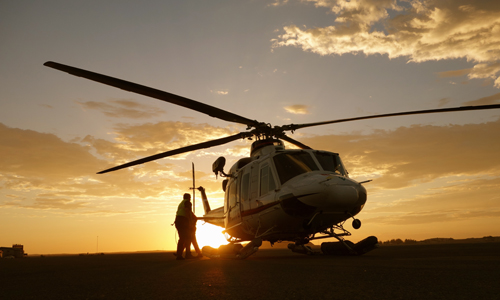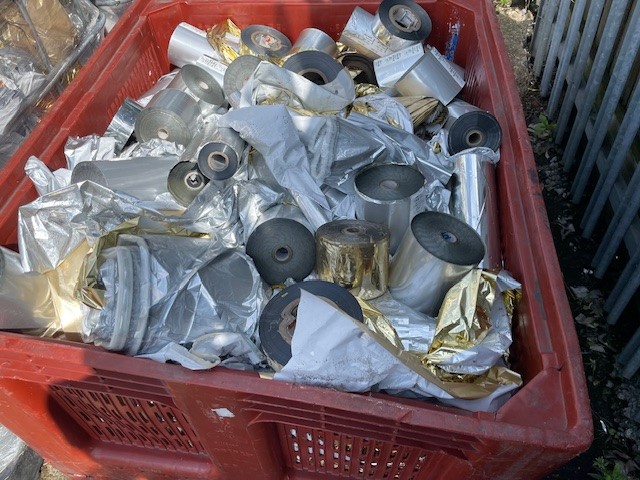
The Africa of the 21st century is often highlighted by the vast metropolitan cities that have been building up steadily to become centres of economic prosperity, yet the continents land is still home to a vast expanse of frontier land. It is on this land, particularly along coastal areas, that many of today’s most exciting oil and gas finds are being made. However, when it comes to operating in such areas, where logistical infrastructure is sometimes non-existent, it often calls for companies to rely on expert advice and local knowledge. It is here where companies like Starlite Aviation come into play.
Established in South Africa in 1999, the group has undergone an extended period of growth to become a multi-faceted aviation business offering a range of helicopter services on a worldwide basis. Such services include relief contract work, oil and gas, passenger and cargo transport, helicopter sales and charter, maintenance and pilot training.
“We began life providing purely disaster relief and support services,” explains Commercial Director, Dimmie de Milander. “From there we expanded into supporting various non-governmental organisations before taking on several contracts for our aircraft on a longer term basis. Through a combination of this contract work and the income that we derive from our training school we were able to begin developing our ability to provide support to customers operating in the offshore oil and gas industry.”
The capital raised from its long term contracts also allowed Starlite to invest in its fleet of aircraft. “Every time we tie up an aircraft to a contact we endeavour to use the money from that to make another aircraft ready to be put into service,” de Milander continues. “In many ways this keeps us one step ahead of the market as it often means we have aircraft ready to take on work as it becomes available.”
Starlite’s fleet today includes aircraft from Aerospatiale, Robinson, Bell, Sikorsky and Eurocopter. “Traditionally,” de Milander states, “we have leant towards the use of Eurocopter aircraft, however what we previously possessed was a slightly older, ageing fleet. Whereas the costs associated with upgrading to a more modern aircraft would previously have made such a possibility challenging for us, the fact that now we have virtually all of our aircraft tied into some form of contract we have the capital available to us to source new models.”
Starlite is proposing a major expansion of its activities over the next few years, which will place increased pressure on the capacity of its existing fleet. Accordingly it has embarked on a fleet renewal and acquisition programme to augment existing aircraft, and cater for a continued shift in demand for its aircraft to newer technology and heavier aircraft types.
Starlite recently signed an agreement to become the launch customer for Eurocopter’s new AS332 C1e aircraft. This new helicopter is ideally suited to the medium-heavy utility market but could also be used to support oil and gas work. The AS332 C1e helicopter is the latest version of the popular Eurocopter Super Puma medium-weight helicopter.
While Starlite isn’t the largest of aviation businesses, de Milander is keen to point out that there is one particular characteristic of the group that allows it to compete with almost anyone in the world when it comes to supplying aircraft, and that is that it has proven countless times that it can operate along supply lines in some of the most difficult, challenging and unpredictable parts of the world.
“Whether our customers operate in the fields of oil and gas or high-end mining, or are involved in non-government agency programmes, they almost always eventually end up working in countries with almost no aviation support infrastructure present. We have seen this in our work in places like Afghanistan, Pakistan, Kosovo, Myanmar, South Sudan and Mali, to name a few locations, and it has always been our focus to be able to provide these clients with safe, reliable support in these regions.”
Whereas the larger corporate helicopter suppliers tend to have a much more risk adverse approach to business, Starlite has always been found to be prepared to judge each situation and scenario by its individual merits before seeing how it can be of service to a client.
That is certainly not to suggest that safety isn’t the most paramount of issues for Starlite, in fact quite the contrary. “Safety has been, is and always will be the most important aspect of our business,” de Milander enthuses. “Through the operations of our training school we are able to handpick the very best pilots for employment and these are invariably those with a huge degree of experience, often gained through military service.”
The skill and capabilities of Starlite’s pilots and crew have been displayed countless times in its lifetime. One particular example of this that sticks out in de Milander’s mind involved on of the group’s Sikorsky S92 aircraft which was providing offshore support for a client based off Namibia’s infamous Skeleton Coast.
“It was during the course of one of its tasks that the aircraft in question suffered an engine fault in a location approximately ten kilometres from the nearest civilisation,” he recalls. “In response to this we organised for an engine to be sent from America to that location, the necessary changes were then made and after just six days the aircraft was back flying again. Understandably the client in question was very pleased at the short amount of time required to remedy the situation and Sikorsky themselves stated that they doubted there are many other companies out there that could have handled such an issue so quickly.”
Today the group’s talent for delivering services in some of the most remote parts of the world, let alone Africa, continues to shine through. Again in Namibia Starlite aircraft can be found operating in Lüderitz, along the south-western coast of the country. It is here, in one of the least hospitable coasts in all of Africa, that it has managed to retain a 99 percent dispatch rate of on-time deliveries.
With offshore oil and gas activity increasing at a considerable rate along both the western and eastern coasts of Africa it is significant that those within Starlite are confident that it is well positioned to provide the types of services that will be in even greater demand going forward.
“I believe that when you consider the growth of the oil and gas industry, our own position in that market and the fact that we have now proven capable of funding the addition of new aircraft into our fleet, it becomes clear that our primary mission need to be to continue delivering above expectations,” de Milander says. “There is such huge potential throughout the continent right now and it is our aim to be at the centre of that, capitalising on the opportunities that will arise. In targeting this we have been forming a number of strategic relationships in key locations such as Namibia, Tanzania, Kenya and Ghana, and in doing so we are making sure that Starlite will be wherever its clients need us to be in the years to come.”
Written by Will Daynes, research by Jeff Abbott
DOWNLOAD
 Starlite-Europe-T&L-Sep13-Bro-s.pdf
Starlite-Europe-T&L-Sep13-Bro-s.pdf












